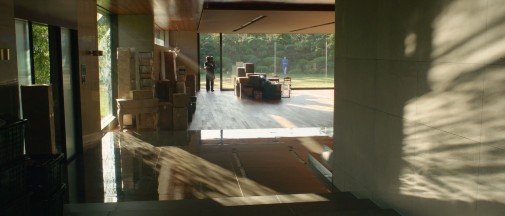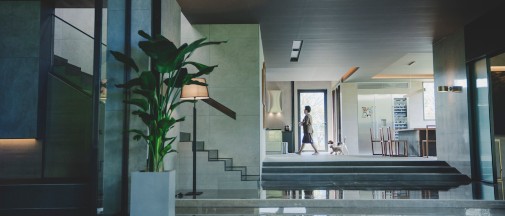
This year's Oscar nominations weren't particularly rich in surprises, positive or otherwise. Still, there are plenty of things to be ecstatic about like the Best Production Design nomination for Bong Joon-ho's Parasite. It's relatively unusual to see non-anglophone films score nods outside the Best International category and even rarer for the Academy's design branch to recognize excellence in contemporary narratives. Usually, period movies, sci-fi adventures and fantasy extravaganzas are de rigueur choices in these categories. However, the Korean masterpiece turned awards season juggernaut was able to overcome whatever prejudices the Academy might have and score a very deserved nod for the work of production designer Ha-jun Lee and set decorator Won-woo Cho.
With that in mind, let's celebrate this miracle of design, an essential element for a film about class in which social hierarchies are materialized in architecture…
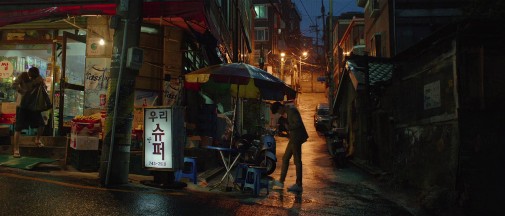
First of all, we should recognize the craft masterfulness of the work. Beyond its dramaturgical brilliance, the sets of Parasite are a tremendous technical achievement. While it may look like the movie was shot on location, most of it was filmed within gigantic sets, including a block that had to be built inside a water tank so it could be flooded for one Parasite's most spectacular sequences. Not only that, the Park family house, where roughly sixty percent of the story unfolds, needed to be designed in a way that matched all the complicated camera movements and compositions envisioned by the director in his complicated script and detailed storyboards. There's even the question of lighting.
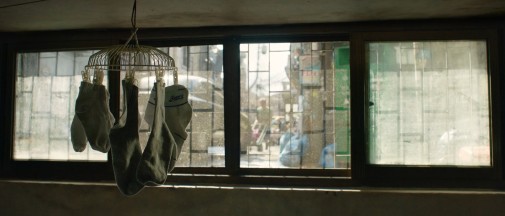
As most of these sets were built on outdoor lots, Ha-jun Lee had to consider the sun's position. After all, access to sunlight is one of Parasite's most potent details of class differentiation. In the story, we mainly follow two families, the wealthy Parks, and the impoverished Kims. Both of them live in houses with wide rectangular windows that frame the outside like Cinemascope, but the views they experience are radically different. The Parks enjoy a vision of utmost peace, a sunny garden sheltered from the city surroundings, while the Kims, who live in a sub-basement apartment, see a gloomy street where drunk guys piss. We may believe the sun is for everyone, but only the wealthy can enjoy it.
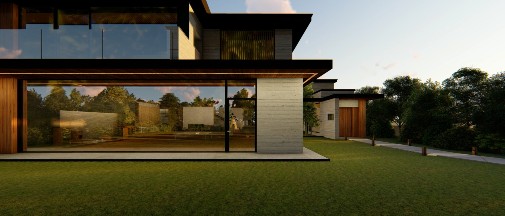
This brings us to how the scenography reflects and augments the film's themes and story, its characterizations, visual discourse and comments on class. One of the greatest elements of the designs is its use of vertical movement as a delineation of the social ladder. Because of the camera choreography, the interiors are drawn with horizontality in mind, but their relation to each other is defined by upwards motion. To get out of the Kim apartment you have to go up a flight of stairs since their domestic environment is below even the street level. Even so, when they've reached the surface, everywhere they look there are stairs and hills, always some background noise highlighting how low they are in the urban space.
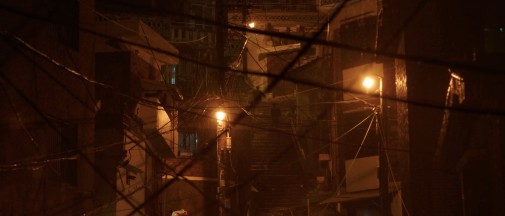
Up, up you go, up staircases and ramps, tilted roads and steep inclines until you reach the neighborhood of the Parks' abode. Their house is the castle on a hill, superior even to their rich neighbors' abodes. The first time the camera tilts up and sees the sun is when we first glance at that beautiful house. We discover the house through the eyes of the Kims' ambitious son, and its beauty is known to us through his awed perspective. It's a wonder of architecture, full of open space and even more stairs, up to the bedrooms and down to the pantry. Well, as we end up discovering, there are even more stairs, but that's a bit too close to spoiler territory for comfort.
![]()
The conversation between houses isn't just done by windows, sun and verticality as a metaphor for class mobility. There's the fact the Parks' home was designed by an architect, made to be purposefully empty, its objects carefully put away in elegant storage. The Kims' quarters, on the other hand, are defined by a lack of space, clutter everywhere including the pizza boxes they fold for measly pay. It's not all contrasts, however. Perchance the most lacerating aspects of their dynamic are the similarities, like walls covered in tokens of family pride. Medals and school distinctions for the poor, carefully curated family photos and childish artistry for the one percent.
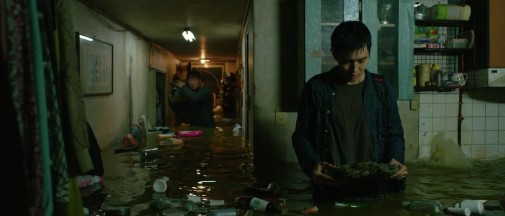
Still, what's most affecting is how the sets help us understand how this story is a mere synecdoche for systemic inequality. The Kims and the Parks are singular cases of class contrast, but they are far from the only ones affected. Individually, none of these people is the problem, the social structure is the true monster of Parasite. The stairs, the windows, the garden, the emptiness and clutter, they all make us see the shape of the economy that dooms poor people to be forever miserable and lets the rich become societal parasites, feeding off the work of others while enclosing themselves in their oasis. The scenography is the story's villain, but the audience's hero since it helps open our eyes to the horrors that are always there but so often overlooked.
